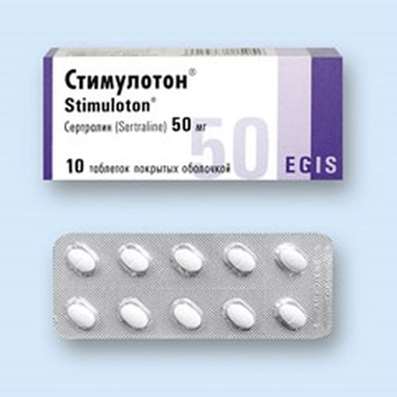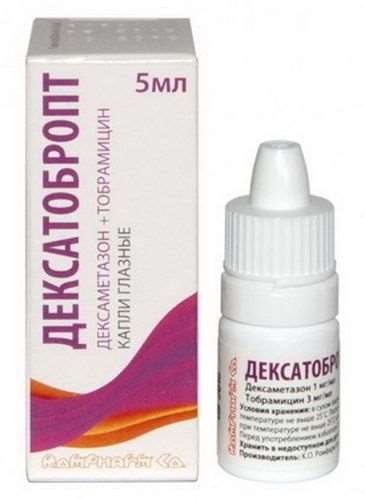Instruction for use: Ethylmethylhydroxypyridine succinate
I want this, give me price
The Latin name of the substance Ethylmethylhydroxypyridine succinate
Aethylmethylhydroxypyridini succinas (genus. Aethylmethylhydroxypyridini succinatis)
Chemical name
2-Ethyl-6-methyl-3-hydroxypyridine succinate
Gross formula
C12H17NO5
Pharmacological group:
Antihypoxants and antioxidants
The nosological classification (ICD-10)
F10.3 Abstinence: Alcohol withdrawal syndrome; Abstinence syndrome; Abstinence syndrome with alcoholism; Abstinence; Alcohol abstinence; Alcohol withdrawal status; Alcohol withdrawal syndrome; Postabstinctive disorder; Post-abstinence condition; Hangover syndrome; Abstinence syndrome; Alcohol abstinence syndrome; Alcohol withdrawal syndrome; Abstinence condition
F40.0 Agoraphobia: Fear of open space; Fear of being in a crowd
F90.0 Violation of activity and attention: Hyperactive child syndrome; Attention Deficit Disorder in Children; Hyperkinetic impulsive syndrome; Violation of attention with hyperactivity; attention deficit; Attention deficit in children; Difficulty concentrating; Concentration reduction; Violation of attention; Impaired concentration; Concentrating defect; Violation of mental activity; Violation of the ability to concentrate; Impairment of concentration; Violations of attention; Inability to concentrate; The weakening of attention; The weakening of the ability to concentrate; Decrease ability to concentrate; Reduced focus; disorders of attention; attention disorder; Attention Deficit Hyperactivity Disorder; Reduced attention; Reduced concentration; Decreased ability to concentrate
G24 Dystonia: Violation of muscle tone
G93.4 Unspecified Encephalopathy: bilirubin encephalopathy; lacunarity status; Tremor when portal-systemic encephalopathy; The latent hepatic encephalopathy; Atherosclerotic encephalopathy; Hypertensive encephalopathy; hypoxic encephalopathy; dismetabolic encephalopathy; Encephalopathy; brain lesion; Porto-caval encephalopathy; Vascular encephalopathy; Traumatic encephalopathy; encephalopathy; encephalopathy; Encephalopathy secondary genesis; Encephalopathy discirculatory; Encephalopathy portocaval; epileptic encephalopathy; hemorrhagic shock and encephalopathy syndrome; Subacute spongiform encephalopathy
I63 Cerebral infarction: ischemic Stroke; Ischemic brain disease; Ischemic stroke; Ischemic stroke and its consequences; Ischemic cerebral stroke; Ischemic cerebrovascular accident; Ischemic brain damage; Ischemic brain damage; ischemic conditions; Cerebral ischemia; Acute hypoxia brain; Acute cerebral ischemia; Acute ischemic cerebrovascular accident; Acute cerebral infarction; Acute ischemic stroke; Acute period of ischemic stroke; Focal cerebral ischemia; Ischemic stroke; recurrent stroke; The syndrome of Morgagni-Adams-Stokes; Chronic cerebral ischemia; cerebrovascular stroke; embolic stroke; Ischemic brain damage
I67.2 Cerebral atherosclerosis: Atherosclerosis of the arteries of the brain; Atherosclerosis of cerebral vessels; Atherosclerotic changes in cerebral vessels; Vascular diseases of the brain; Sclerotic ischemic attacks; Sclerosis of cerebral vessels
I69 The effects of cerebrovascular disease: Ischemic and post-stroke condition; Residual effects of hemorrhagic stroke; Residual effects of ischemic stroke; Residual effects of cerebral circulation; Residual effects of subarachnoid hemorrhage; Ischemic stroke; Transferred thromboembolic stroke; The consequence of cerebrovascular accident; The consequence of insufficient blood supply to the brain; Consequences of ischemic stroke; The consequences of a stroke; Postapopleksicheskoe state; post-stroke period; post-stroke syndrome; Condition after stroke; Condition after cerebrovascular accidents; Chronic cerebrovascular insufficiency
R41.3.0 * Reduced memory: memory loss; memory impairment; The weakening of memory; memory impairment; Forgetfulness; Violation memory; Memory impairment in elderly patients; memory impairment; Memory impairment in relation to recent events
R41.8.0 * Disorders intellectual mnesticheskie: Secondary violations mnemonic functions; Difficulty concentrating; The difficulty of mental activity; Intellectual impairment; Intellectual-mental breach; Intellectual-mental disorder; psychic infantilism; Cognitive impairment; Violation of intellectual; Violation of mnemonic functions; Violation of intellectual activity; Violation of thinking; Violation of mental capacity; Violations of intellectual functions; Violations of thinking; Weakening intellectual productivity; Backlog of mental development; Primary disorders mnemonic functions; Lowering the intellectual productivity; Lowering the intellectual-mental functions; distraction; thought disorder; thought disorder; The decline of intellectual efficiency; Reduced intellectual-mental functions; Reducing the intellectual capacity; The decline of mental abilities; The decline of mental abilities in the elderly; The decline of mental function; The decline of mental function; Reduced memory in old age; Reduced mental activity; Reduced intellectual level; The deterioration of intellectual-mental functions; Chronic disorders of mental capacity
T43.4 Poisoning with neuroleptic derivatives of the phenothiazine series, butyrophenone and thioxanthene
CAS Code
127464-43-1
Characteristics of the substance Ethylmethylhydroxypyridine succinate
White or white with a creamy hue of crystalline powder. Easily soluble in water.
Pharmacology
Pharmacological action - antioxidant, membrane stabilizing, anxiolytic, nootropic, adaptogenic, cerebroprotective.
It inhibits lipid peroxidation, increases the activity of the antioxidant system, activates the energy-synthesizing functions of mitochondria, improves energy metabolism in the cell, helps maintain the level of macroergies, including. with stress hypoxia. Activates intracellular synthesis of protein and nucleic acids, enzymatic processes of the Krebs cycle, promotes glucose utilization, synthesis and intracellular accumulation of ATP. It restores the structure and function of membranes, has a modulating effect on membrane-bound enzymes, ion channels, transport systems of neurotransmitters, receptor complexes, incl. GABA-benzodiazepine, acetylcholine, improves synaptic transmission and the interrelation of brain structures.
It improves the metabolism and blood supply of the brain, the rheological properties of blood and microcirculation, the functioning of the immune system, suppresses the aggregation of platelets. Has antihypoxic, cerebroprotective, anxiolytic, antistress, nootropic (improving memory, attention, mental performance), antihypnotic, anti-alcohol, anticonvulsant, anti-Parkinsonian and vegetotrophic action. Reduces the level of total cholesterol and LDL and causes a regression of atherosclerotic changes in the arteries (lipid-lowering and anti-atherogenic action). Has anti-ischemic properties: improves blood flow, limits the area of ischemic damage and stimulates reparative processes. Increases the resistance of the body to the effects of extreme factors and oxygen-dependent pathological conditions such as shock, stress, sleep deprivation, hypoxia, cerebral circulation, brain trauma, ischemia, electric shock, physical and mental overloads, conflict situations, intoxications (ethanol, etc.). . Slows down the aging process. The antialcoholic effect is manifested in the sobering effect and the weakening of motivation and is used to stop the withdrawal syndrome and treat acute poisoning. Simultaneous reception with alcohol does not exacerbate intoxication, but prevents it. Reduces resistance to psychotropic drugs and enhances their effect, which makes it possible to reduce therapeutic doses and the likelihood of developing side effects. Radioprotective properties can be used for preventive purposes with an increased degree of radiation.
In experimental and clinical placebo-controlled studies, the high efficacy of oxymethylethylpyridine succinate in the complex therapy of ischemic stroke (100-1000 mg / day drip) is shown, which is manifested by regression of consciousness disorders and signs of vasomotor instability, acceleration of recovery of motor functions.
In children, the inclusion of the drug (10 mg / kg / day inwards) in the scheme of therapy of non-paroxysmal supraventricular tachycardia and sinus node weakness syndrome increased the efficiency of treatment by an average of 20-27%.
Application of the substance Ethyl methyl hydroxypyridine succinate
Solution for injection: acute and chronic disorders of cerebral circulation, incl. ischemic stroke and its consequences; discirculatory encephalopathy, vegetovascular dystonia; psychosomatic diseases; neurotic and neurosis-like disorders with anxiety, fear, emotional stress; memory and attention disorders, mental disability; mental and neurological diseases in old age, atherosclerosis of cerebral vessels; relief of alcohol withdrawal syndrome, accompanied by neurosis-like and vegetative-vascular disorders; acute intoxication with antipsychotics; acute purulent-inflammatory processes of the abdominal cavity: acute necrotic pancreatitis, peritonitis (as part of complex therapy).
Tablets: ischemic heart disease (complex therapy).
Contraindications
Hypersensitivity to oxymethylethyl pyridine succinate and / or pyridoxine, acute violations of liver and kidney function, pregnancy, breast-feeding.
Restrictions on the use
Children under 18 years of age (safety and efficacy not determined).
Application in pregnancy and lactation
Contraindicated (sufficient clinical experience in pregnancy and during breastfeeding is not available).
Adverse effects of the substance Ethyl methylhydroxypyridine succinate
Nausea, dry mouth, allergic reactions.
Overdose
Overdose is possible drowsiness.
Routes of administration
IM, IV, inside.
Precautions for the substance Ethyl methyl hydroxypyridine succinate
With caution apply during work drivers of vehicles and people whose profession is associated with increased concentration of attention.

 Cart
Cart





